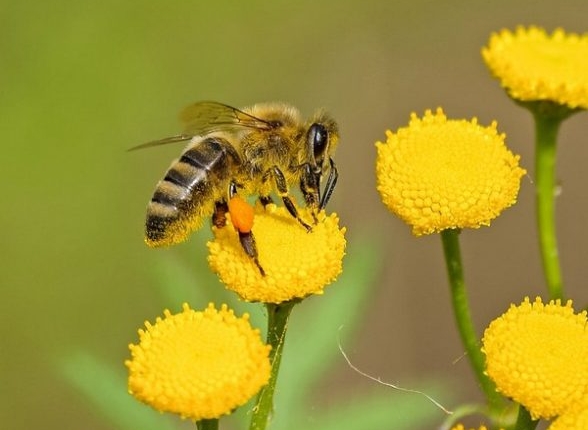A study from Imperial College London has found that temperature influences how pesticides affect bumblebee behaviors essential for survival and pollination services. Researchers analyzed the impact of two pesticides, imidacloprid and sulfoxaflor, on six bumblebee behaviors at three temperatures. The study found that the impact of pesticides on bee behaviors is influenced by temperature, indicating that climate change effects are unpredictable. The study suggests that extreme temperature events under climate change could increase the impact of pesticides on bee populations and their pollination services in the future. The findings are particularly significant as bees are responsible for pollinating many important crops, including cereal crops, legumes, and fruit trees. The study highlights the importance of further research to better understand the impact of temperature on the effects of pesticides on bees and other important insects. The researchers hope that their findings will help develop a toxicity forecast framework to predict how bee populations will respond to climate change living in intense agricultural landscapes.
Study Finds Temperature Influences Impact of Pesticides on Bee Behavior
A new study reveals that the impact of pesticides on bees’ behavior is influenced by temperature, indicating that climate change effects are unpredictable. The study suggests that extreme temperature events could increase the impact of pesticides on bee populations and their pollination services in the future.
Researchers from Imperial College London conducted the study, which is published in Global Change Biology. The team analyzed the impact of two pesticides, imidacloprid and sulfoxaflor, on six bumblebee behaviors at three different temperatures: 21°C, 27°C, and 30°C.
The study found that four out of the six bumblebee behaviors studied, including responsiveness, likelihood of movement, walking rate, and food consumption rate, were more affected by imidacloprid at the lower temperature. This suggests that cold snaps could increase pesticide toxicity on behaviors that are essential for nest duties.
However, the study also found that a key behavior, the distance the bees could fly, was most affected by imidacloprid at the highest temperature. The relationship showed a sharp drop-off, with flight distance measuring the same between 21°C and 27°C, before falling significantly when reaching 30°C.
The study’s findings are particularly significant because certain pesticides, particularly a class called neonicotinoids, are known to impact bees and other important insects, contributing to population declines. The study indicates that the impact of climate change on temperature may further exacerbate the effects of pesticides on bee populations, thereby threatening their pollination services.
In conclusion, the study highlights the importance of further research to better understand the impact of temperature on the effects of pesticides on bees and other important insects. The findings also suggest that mitigating the impact of climate change on temperature is critical to preserving bee populations and their pollination services.
Study Finds ‘Tipping Point’ in Bees’ Ability to Tolerate Combined Temperature and Pesticide Exposure
A new study from Imperial College London has found that temperature influences the degree to which pesticides alter bumblebee behaviors essential for survival and pollination services. The study suggests that the combined effects of climate change and increased pesticide use could have unpredictable consequences for bee populations.
Researchers analyzed the impact of two pesticides, imidacloprid and sulfoxaflor, on six bumblebee behaviors at three temperatures: 21°C, 27°C, and 30°C. The study found that environmental temperature can influence the degree to which pesticides can alter bee behaviors, with four of the six behaviors studied more affected by imidacloprid at the lower temperature. Flight distance, an important behavior for pollination, was most strongly affected by imidacloprid at the highest temperature, indicating a “tipping point” has been reached in the bees’ ability to tolerate the combined temperature and pesticide exposure.
Lead researcher Dr. Richard Gill noted that the sharp drop-off in flight performance suggests a ‘tipping point’ has been reached in the bees’ ability to tolerate the combined temperature and pesticide exposure. He said that this effect happens over the span of just three degrees, which changes our perception of pesticide risk dynamics given such temperature changes can commonly occur over the space of a day.
The study’s findings are particularly significant as bees are responsible for pollinating many important crops, including cereal crops, legumes, and fruit trees. The study highlights the importance of further research to better understand the impact of temperature on the effects of pesticides on bees and other important insects. The researchers hope that their findings will help develop a toxicity forecast framework to predict how bee populations will respond to climate change living in intense agricultural landscapes.
The study also suggests that mitigating the impact of climate change on temperature is critical to preserving bee populations and their pollination services. As we diversify our food supply, demand for their pollination services will increase, but so may the stresses bees face, from climate change and increased insecticide use.
Don’t miss interesting posts on Famousbio










